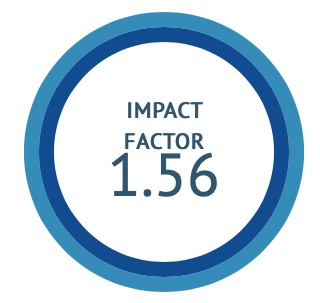An Insilico Computational Screening of Siddha Formulation Kalingathy Thailam against Cyp- 17α-Hydroxylase in PCOS
DOI:
https://doi.org/10.47552/ijam.v14i2.3642Keywords:
Docking study, PCOS, Siddha, Herbal formulation, Kalingathy thailam, CYP-17α -hydroxylaseAbstract
Background: PCOS is characterized by ovulatory failure, hirsutism, obesity, glucose intolerance, resistance to insulin, dyslipidemia and infertility. Siddha system of medicine has a worthwhile therapeutic effect in treating PCOS. The bioactive compounds of Kalingathy Thailam mentioned in Siddha literature was selected for evaluating their ability to inhibit CYP- 17α-hydroxylase. Objective: The study is aimed to perform the In Silico computational screening of the formulation Kalingathy Thailam against the target enzyme CYP-17 α -hydroxylase in PCOS. Methods: Autodock program was used against the target enzyme CYP-17 α -hydroxylase for the phytocomponents such as Sinapic acid, Cucurbitacin B of Citrullus colocynthis (L. ) Schrader, Aromadendrene, Linolenic acid of Melia dubia Linn. , Onionin A, Protocatechuic acid of Allium cepa Linn. , Ascorbic acid, Limonene of Citrus limon (L. )Burm. f. , Ricinine of Ricinus communis Linn. Results: A total of 9 components were screened, out of these Protocatechuic acid, Ascorbic acid, Linolenic acid and Cucurbitacin B reveals maximum of 2 to 3 interactions accounting for 75-100% binding efficacy with the core active amino acid residues present on the target enzyme CYP- 17α-hydroxylase. Conclusion: Based on the results of the computational analysis it was concluded that the bio-active compounds present in the herbal ingredients possess significant binding against the target enzyme CYP-17α-hydroxylase by interacting with active amino acids. Hence these phytocomponents which inhibit the target enzyme may act as a potential therapeutic agent for management of PCOD.
Downloads
Published
How to Cite
Issue
Section
License
Copyright (c) 2023 International Journal of Ayurvedic Medicine

This work is licensed under a Creative Commons Attribution 4.0 International License.
The author hereby transfers, assigns, or conveys all copyright ownership to the International Journal of Ayurvedic Medicine (IJAM). By this transfer, the article becomes the property of the IJAM and may not be published elsewhere without written permission from the IJAM.
This transfer of copyright also implies transfer of rights for printed, electronic, microfilm, and facsimile publication. No royalty or other monetary compensation will be received for transferring the copyright of the article to the IJAM.
The IJAM, in turn, grants each author the right to republish the article in any book for which he or she is the author or editor, without paying royalties to the IJAM, subject to the express conditions that (a) the author notify IJAM in advance in writing of this republication and (b) a credit line attributes the original publication to IJAM.




